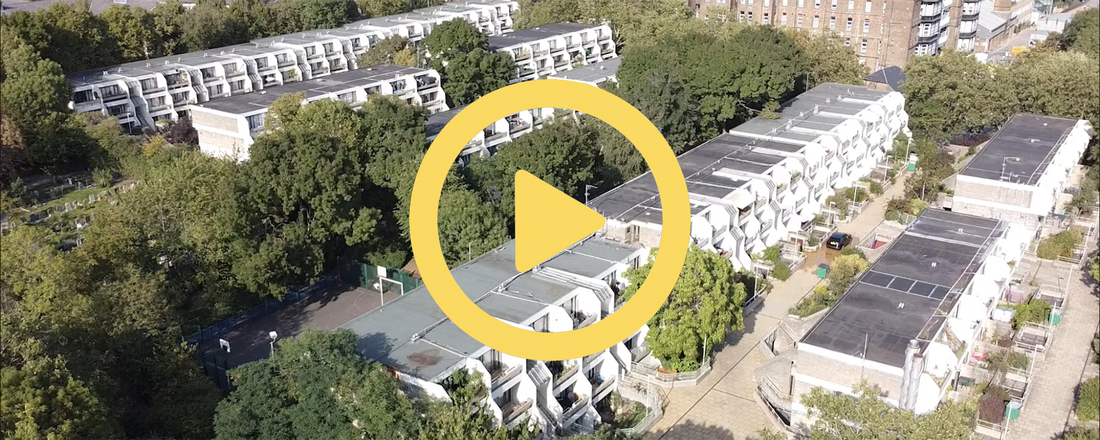Get updates from The Developer straight to your inbox Yes, please!
"There's a real outdoor community. Everyone joins up and plays"
"White Flats" is a powerful short film on how the design of a housing estate can create community and encourage independence and child’s play

A powerful short film on how the design of a housing estate can create community and encourage independence and child’s play, "White Flats" considers how neighbourliness can be encouraged by design through the curation of views, windows, pedestrian routes and shared spaces, adopting a child’s eye view of the Highgate New Town Phase 1, better known as the Whittington Estate in north London.
Often used as a backdrop for film and TV, in "White Flats" the estate and its residents take centre stage. In the film, there is an urgency to shift the narrative with interviews focussed on the pleasures of its alleyways and gardens. Backstreets and front doors are recast as settings for child’s play. The film’s younger stars showcase their proud ownership of the estate’s nooks and crannies, as they explain how the pedestrian nature of the estate allows them free range to knock on doors and play out. As Tristan says in the film, "Everyone joins up and plays."
Created entirely by volunteer residents with no budget, the film was directed by Anna Price and produced by architects Rachel Stevenson, David Miller Architects and Jo McCafferty, Levitt Bernstein, who raised their families on the estate and wanted to celebrate the vision of its architect, Peter Tábori, who died in February 2023.
McCafferty writes: "The film showcases the 45 year-old estate as an exemplar of good housing design and was created entirely by residents, who shot, edited, composed the music, provided photographs and reminiscences, and starred in it.
"There was no budget – all resources and skills were given voluntarily by the community. It was an estate-wide collaboration, communicating the lived experience of residents of all ages and is a powerful reminder of the impact of good housing and its ability to encourage community life and neighbourliness."
The film doesn’t tackle issues of stigma, poverty and the gentrification of council estates through right-to-buy – focussed as it is on a celebration of the estate’s design and sociality. However the mix of tenants has relevance in the context of mixed-tenure housing created today and attempts to create community using child’s play as connective tissue in the social fabric.
A housing estate built for the London Borough of Camden between 1972 and 1979, the 275-home development was designed by Peter Tábori and Ken Adie as part of the Council’s in-house team. The south-facing, low-rise terraces are positioned around four pedestrianised streets with a central green space.
The first screening of the film was at a memorial event for Peter Tábori in November 2023 at the University of Westminster. The film won Best Use of Video at the Archiboo awards.
Producers: Jo McCafferty (Levitt Bernstein) and Rachel Stevenson (David Miller Architects)
Camera: Anna Price and Marc Silver
Music: Tara Creme
Director: Anna Price
Special thanks to: Tim Crocker, Jay Jones, Andrew Rae, Valeria Szegal, Mark Swenarton, Fabian Watkinson, Wood that Works, Levitt Bernstein, David Miller Architects, Martin Charles/RIBA Collections
If you love what we do, support us
Ask your organisation to become a member, buy tickets to our events or support us on Patreon
Sign up to our newsletter
Get updates from The Developer straight to your inbox
Thanks to our organisation members
© Festival of Place - Tweak Ltd., 124 City Road, London, EC1V 2NX. Tel: 020 3326 7238
© Festival of Place - Tweak Ltd., 124 City Road, London, EC1V 2NX. Tel: 020 3326 7238
